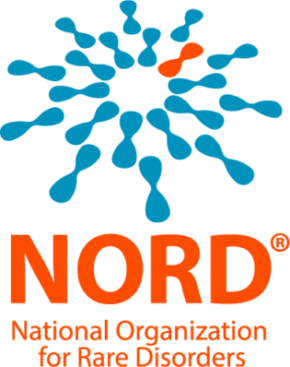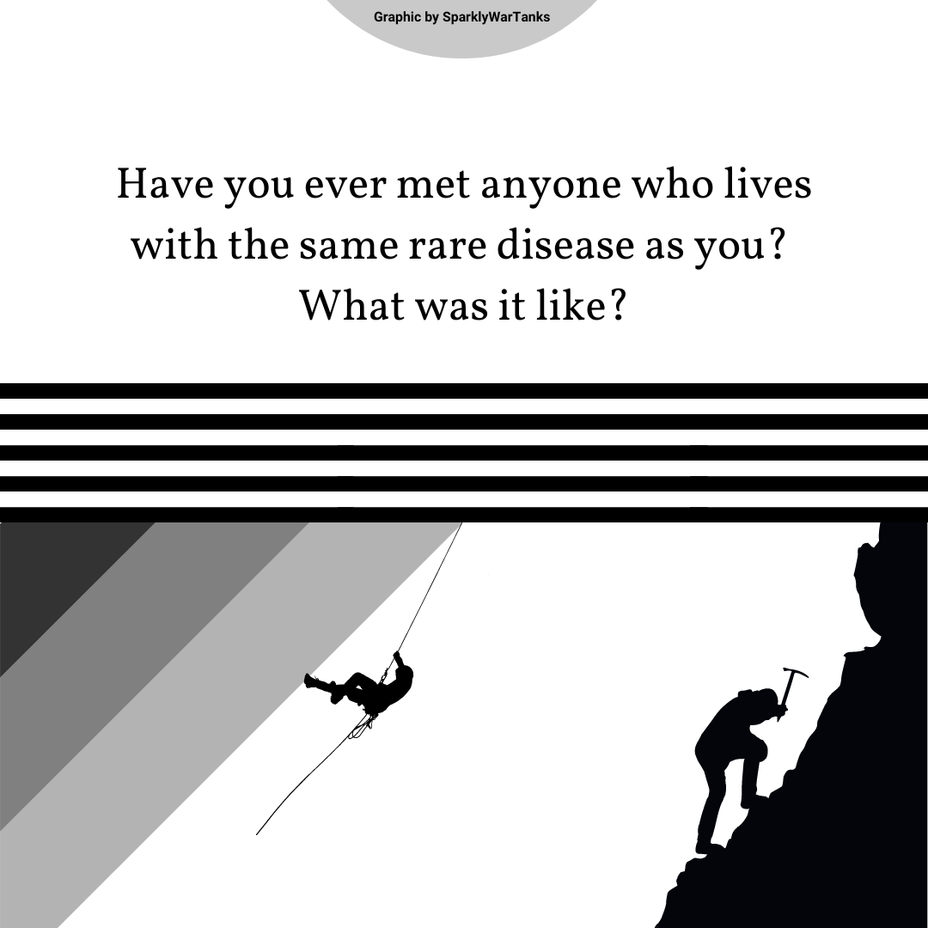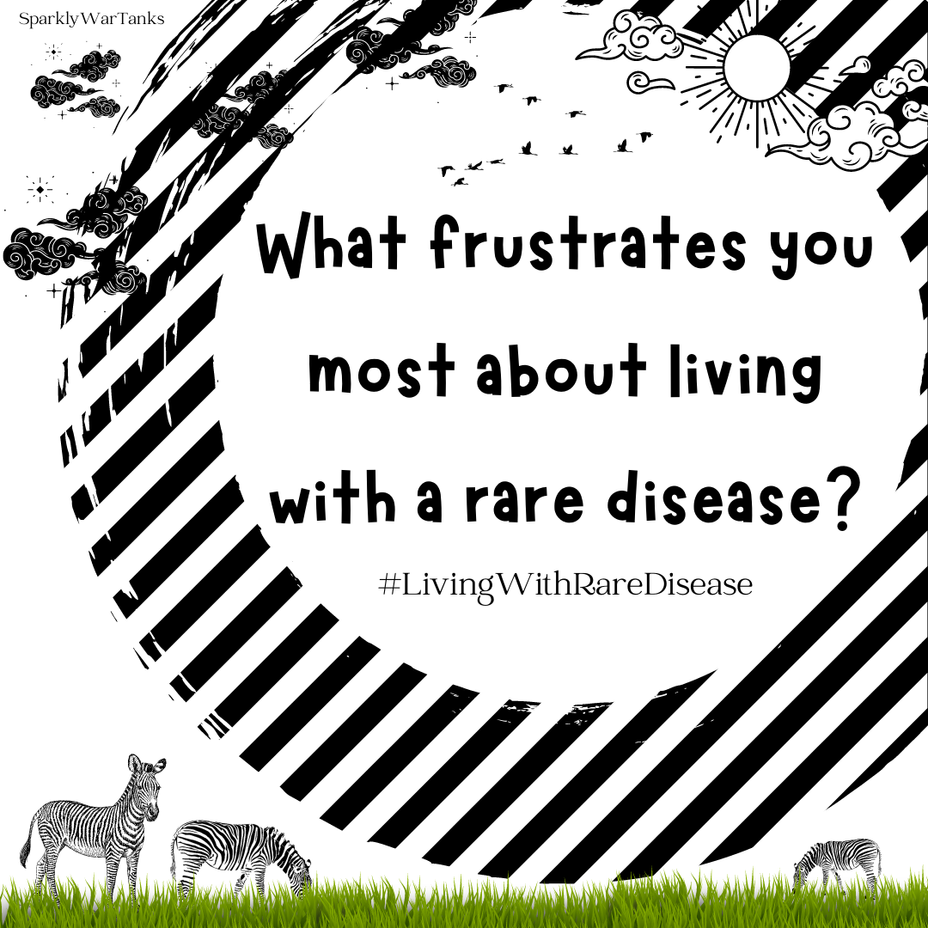That’s me. I’m a neurosarcoidosis warrior. What is neurosarcoidosis? It’s a rare inflammatory disease where small immune cell clumps called granulomas form on any part of the body. In the case of neurosarcoidosis, the central nervous system is inflamed. It’s intense inflammation of the nerves and brain.
neurosarcoidosis is just one form of sarcoidosis. sarcoidosis is, in general, a rare disease with around 200,000 people who have some form of the disease in the United States. Most of the cases of sarcoidosis affect the lungs first and many cases spread to other parts of the body. neurosarcoidosis is even rarer. About 5% to 15% of confirmed sarcoidosis cases are neurosarcoidosis.
My body’s presentation of neurosarcoidosis is even rarer with it being in the brain and central nervous system only. That’s part of the reason why it took so long for me to get an official diagnosis and it required a brain biopsy at the Mayo Clinic. I’m actually fortunate to get an official diagnosis. Many sarcoidoses sufferers don’t get a diagnosis ever or a diagnosis takes years when permanent damage to the body has already taken place.
If you’re not familiar with a brain biopsy, it’s when a brain surgeon drills a small hole in the skull and collects brain tissue. The tissue is then tested and evaluated to determine the cause of a person’s illness. I was fortunate to able to go to the Mayo Clinic and have a world-class brain surgeon do this procedure, Dr. Fredric Myer. The brain biopsy was hardly even considered in any other hospital or doctor that I visited throughout the past year and a half. I’ll always be thankful for the opportunity to even go to the Mayo Clinic in January of this year.
Once I got the diagnosis, I was immediately put on the Mayo Clinic’s treatment plan, which is 40 milligrams of Predisone each day (the cornerstone of treatment for many forms of sarcoidosis) and Remicade infusions every other week, now it’s every month.
Prior to falling ill, I’ve been working as a marketing associate at Penn State in State Collge, PA and would make frequent trips back to Long Island, New York my hometown. I was also enjoying time with my partner, Sean and exercising a lot. The symptoms came on in the spring of 2018. I experienced a variety of neurological symptoms from severe headaches shortly after I graduated with my master’s degree that most doctor’s thought where sinus headaches or an inner ear infection, vomiting every morning which prompted doctors to do multiple pregnancy tests, complete loss of my menstrual cycle, body tremors, intense brain fog, and difficulty walking and speaking at times. It all came to a head a couple of days after Thanksgiving 2018 when I woke up from a nap and couldn’t talk at all. Sean was home at that time and was asking me simple questions, such as “What is your nephew’s name?”. I knew what he was asking of me, but couldn’t articulate a response. That was it, we went to the local hospital in State College where I was then transferred to Geisinger in Danville, PA.
After a week at Geisinger, there was no conclusive evidence for any particular disease. The best theory was that I had a newly discovered syndrome called CLIPPERS. I was put on a steroid trial and it actually worked for a few months. I returned to work and was living a fairly normal life with little side effects from the steroids.
However, trying to get off the steroids was difficult. I experienced some new symptoms. In May 2019, around Memorial Day, I was at work and seemed to blackout at my desk. It’s strange. I don’t remember anything about this incident, but I was able to talk to my colleagues and the EMTs who took me to the hospital. You might be thinking I had a seizure, but the EEG couldn’t confirm a seizure. After another week in the hospital, there was still no definitive diagnosis, but I was back on steroids and the immunosuppressant Cellcept. That worked for me throughout the summer and was able to travel to New York with Sean to see family and friends.
Shortly after a much-needed vacation to Assateague Island, Maryland in September 2019 with Sean and friends, I woke up with double vision that progressed quickly. Even my eyeglass prescription changed drastically. I had to wear an eyepatch to read and do work. I couldn’t walk on my own either because the double vision was disorienting. The doctors at Geisinger ran eye exams which didn’t show any damage to my eyeballs and had no idea would might be causing the double vision and overall vision changes.
It was around this time that Sean and I talked about going to the Mayo Clinic. Sean thankfully poured a lot of time and resources into planning a visit to the Mayo Clinic in Rochester, Minnesota. Every doctor’s appointment was planned for us without any conflicts and the staff was and continue to be incredibly kind and on top of every detail. We were even able to get appointments in January of this year. You all know how cold and snowy Minnesota can be in January.
Finally, after two trips to the Mayo Clinic it was decided by my neurologist at Mayo Clinic, Dr. Andrew McKeon that a brain biopsy would be the only option to obtaining an official diagnosis as all other tests came back negative for any disease. A brain biopsy was planned for the following day and went very smoothly. In two weeks I had the official diagnosis of neurosarcoidosis. It was a relief and offered some hope.
Now it’s April 2020 and there continue to be a lot of bumps in the road. I’m still having symptoms that include darkened vision, sensitivity to light especially the sun, joint pain, my hands, and feet fall asleep, brain fog, and depression. We’re not sure what symptoms the steroids are contributing to and which are from the neurosarcoidosis. I’m still working with doctors to try to get an understanding of my vision issues.
There are glimmers of hope. I’m able to work each day, especially during the COVID-19 pandemic. Around 3 pm, my body starts to relax and I feel a lot better mentally and physically. It’s an unpredictable disease. I don’t know what each day will bring. I still get sad when I can’t wake up the way I did two years ago with physical energy ready to take on the day.
I get up every day, take a shower, eat breakfast and get on with my day. I wear sunglasses when I work on my computer and take frequent breaks to rest my eyes. Sean and I also try to walk every day or I’ll do light Yin yoga and meditate. We’ve been doing at least 2 mile walks each day! I’m now following the Autoimmune Protocol Diet which has resulted in many people with autoimmune diseases, such as neurosarcoidosis, going into remission or lessen the severity of their symptoms.
When Sean and I researched the symptoms of neurosarcoidosis we realized that I have had most of the classic symptoms, including the double vision. sarcoidosis is a disease that is not widely researched because it’s so rare. The causes are not clearly identified and there’s no cure at this time. The suspected causes are genetics and environmental factors, but I may never know what caused my case and that’s okay.
I don’t know what the future holds for me with this disease, but I know I will continue to take care of my body as bests I can, live in the moment, and practice gratitude and compassion. April is sarcoidosis Awareness Month. Now with the COVID-19 pandemic, it’s even more important to support sarcoidosis awareness. Many sarcoidosis patients have compromised immune systems due to immunosuppressant medications. that make us even more suspectable to viruses and infections. Keep on fighting sarcoidosis warriors!




